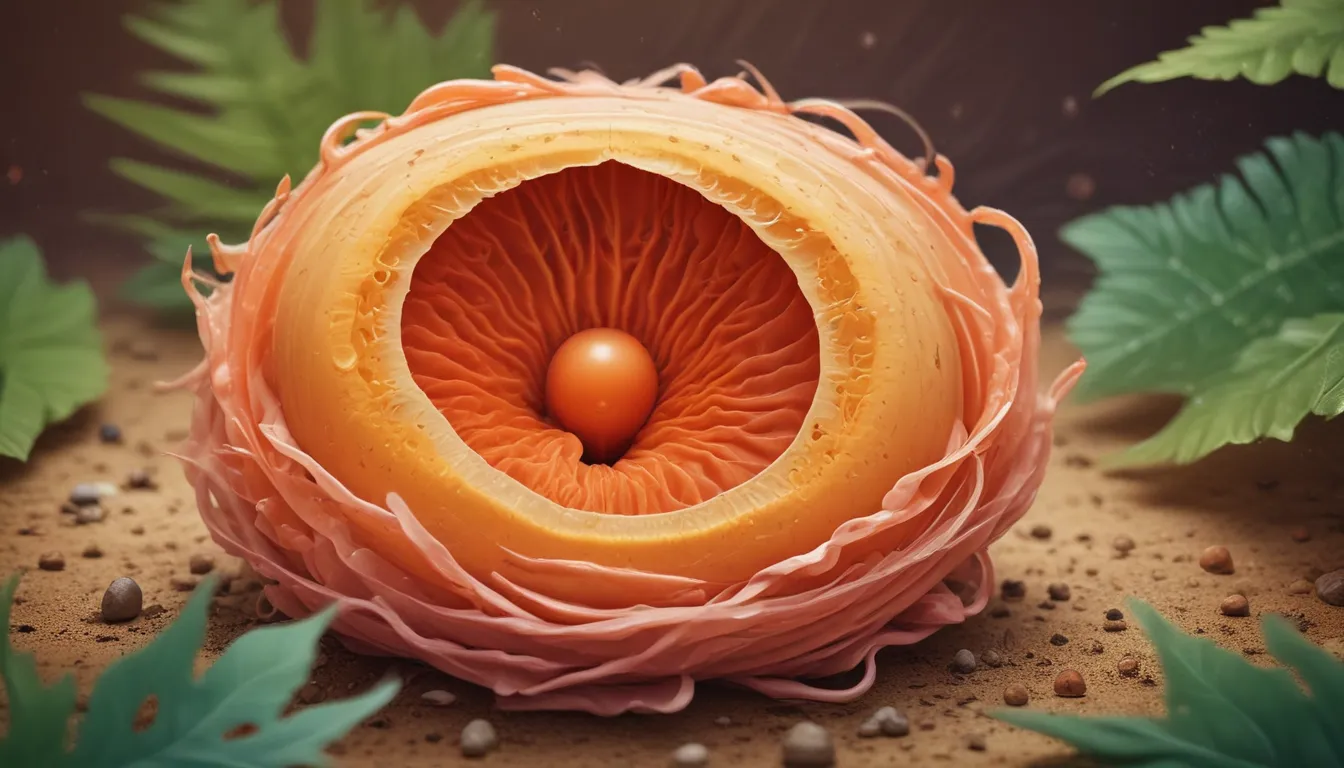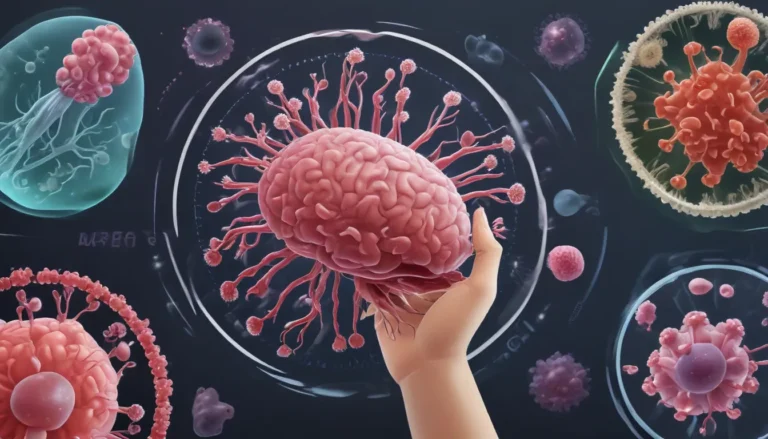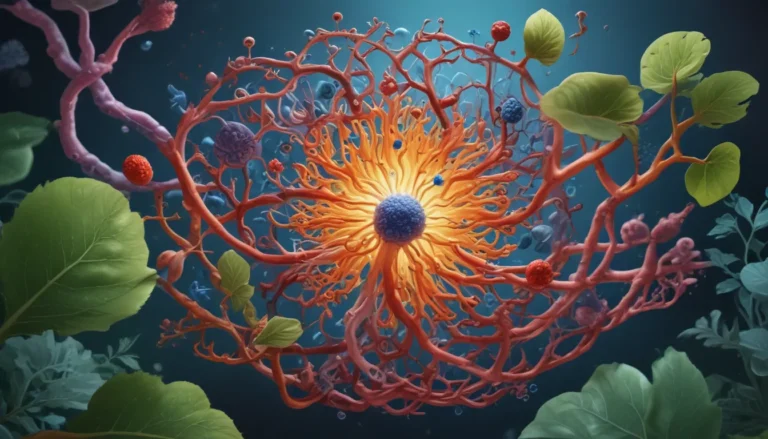A Note About Images: The images used in our articles are for illustration purposes only and may not exactly match the content. They are meant to engage readers, but the text should be relied upon for accurate information.
Embark on a captivating journey through the intricate world of embryonic development, where a single-celled zygote transforms into a complex organism with distinct tissue layers. Gastrulation marks the beginning of this remarkable process, shaping the body plan and laying the groundwork for future growth and differentiation. In this article, we will explore 18 intriguing facts about gastrulation that highlight its significance and complexity.
Understanding Gastrulation: A Gateway to Life
Gastrulation is a crucial stage in embryogenesis that occurs after fertilization and cell division. It is a dynamic process that involves intricate cellular movements and signaling events, ultimately establishing the foundation for the formation of tissues and organs in the developing embryo.
The Dance of Cellular Movements: Variations in Gastrulation
The process of gastrulation can vary across different organisms, with variations such as invagination, involution, and epiboly depending on the species and their evolutionary history. This diversity showcases the adaptability and complexity of gastrulation in shaping embryonic development.
Unraveling the Signaling Pathways: The Molecular Orchestra of Gastrulation
Gastrulation is governed by a network of complex signaling pathways involving molecules like Wnt, BMP, and FGF. These pathways regulate cellular movements and differentiations, orchestrating the intricate dance of gastrulation.
From Blastula to Gastrula: The Transformation Unveiled
During gastrulation, the blastula undergoes extensive rearrangements to form a structure known as the gastrula. This transformation marks a pivotal moment in embryonic development, setting the stage for the formation of the three germ layers.
Cell Migration: A Symphony of Movement
Cells undergo directed movements during gastrulation, migrating from the surface layers to the interior of the embryo. This intricate choreography of cell migration is essential for the proper organization and differentiation of tissues and organs.
The Genesis of Germ Layers: Ectoderm, Endoderm, and Mesoderm
Gastrulation gives rise to the three primary germ layers: ectoderm, endoderm, and mesoderm. Each of these layers plays a vital role in the development of specific tissues and organs, shaping the body plan of the embryo.
The Ectoderm: A Gateway to the Nervous System
One of the primary germ layers formed during gastrulation, the ectoderm gives rise to the brain, spinal cord, and other neural structures. It is the foundation for the development of the intricate nervous system.
The Endoderm: Nurturing Internal Organs
Another germ layer, the endoderm, develops into the respiratory system, digestive system, liver, and other internal organs. It provides the essential framework for the formation of vital internal structures.
The Mesoderm: Building Blocks of Muscle and Bone
The mesoderm contributes to the development of muscles, skeletal system, cardiovascular system, and reproductive organs. It forms the structural foundation for movement, support, and circulation in the developing organism.
Establishing the Blueprint: Body Plan Formation in Gastrulation
Through gastrulation, the basic body axes and regional identities of different embryonic tissues are established. This process sets the stage for the intricate patterning and differentiation that occur throughout embryonic development.
Cell-Cell Communication: An Intricate Web of Signaling
Cell signaling and adhesive interactions play a critical role in coordinating the movements and differentiations of cells during gastrulation. This intricate communication network ensures the proper organization and development of tissues and organs.
Master Regulators: Genes that Shape Gastrulation
Genes like Brachyury, Goosecoid, and Mix-like are master regulators that control the gene expression patterns driving gastrulation. These genes play a pivotal role in orchestrating the complex cellular movements and differentiation processes.
The Notochord: A Backbone of Development
During gastrulation, the mesoderm gives rise to the notochord, a key structure in chordates that serves as the foundation for spinal column development. The notochord plays a crucial role in providing structural support and signaling cues for embryonic development.
Gastrulation in the Animal Kingdom: Diverse Pathways
While most organisms undergo gastrulation with the formation of a gastrula, some animals, like insects, exhibit gastrulation without the typical gastrula structure. This diversity highlights the adaptability and complexity of gastrulation across different species.
Primordial Germ Cells: Seeds of Future Generations
Gastrulation is essential for the formation of primordial germ cells, which give rise to eggs and sperm. These specialized cells are specified during gastrulation and then migrate to the developing gonads, ensuring the continuity of the species.
The Consequences of Disruption: Gastrulation Defects
Disruptions in gastrulation can lead to severe developmental abnormalities, such as neural tube defects, cardiac malformations, and gastrointestinal abnormalities. These defects underscore the importance of gastrulation in shaping the proper development of tissues and organs.
The Frog’s Perspective: Gastrulation in Amphibians
Frogs and other amphibians undergo gastrulation through a process called involution, which involves a rolling movement of cells. This frog-like manner of gastrulation showcases the diversity of developmental pathways in the animal kingdom.
Precision in Timing: Coordinated Gastrulation Events
Gastrulation is a highly coordinated process, with precise timing and sequence of events tightly regulated to ensure proper development and tissue formation. This orchestrated dance of cellular movements is essential for the successful shaping of the developing embryo.
Gastrulation: A Quest for Knowledge
Gastrulation remains a subject of extensive scientific research, shedding light on the genetic mechanisms underlying embryonic development. Scientists continue to study gastrulation to gain a deeper understanding of the intricate processes that shape the early stages of life.
Unveiling the Mysteries of Life: The Essence of Gastrulation
In conclusion, gastrulation is a fascinating process that plays a crucial role in shaping the development of multicellular organisms. It is a testament to the complexity and wonder of embryonic development, laying the groundwork for the formation of tissues and organs that define living organisms. As we delve deeper into the mysteries of gastrulation, we gain valuable insights into the mechanisms that drive life’s early stages and contribute to advancements in various fields.
FAQs: Navigating the World of Gastrulation
Q: What is gastrulation?
A: Gastrulation is a crucial stage in embryonic development where a blastula transforms into a gastrula, establishing the primary germ layers and initiating the formation of various tissues and organs.
Q: When does gastrulation occur?
A: Gastrulation typically occurs during the early stages of embryogenesis, shortly after fertilization and blastula formation.
Q: What are the three germ layers formed during gastrulation?
A: The three germ layers formed during gastrulation are the ectoderm, mesoderm, and endoderm. These layers give rise to different tissues and organs in the developing organism.
Q: How does gastrulation occur?
A: Gastrulation involves complex cellular rearrangements, including invagination, involution, and ingression. These movements are controlled by various signaling pathways and morphogen gradients.
Q: What is the significance of gastrulation?
A: Gastrulation is significant as it sets the foundation for subsequent developmental processes, establishing the body plan and initiating the formation of specialized tissues and organs.
In conclusion, the journey through the intricacies of gastrulation unveils the wonders of embryonic development and the intricate processes that shape life from its earliest stages. As we continue to uncover the mysteries of gastrulation, we gain a deeper understanding of the mechanisms that drive the formation of tissues, organs, and ultimately, the complexity of living organisms. It is through exploring the complexities of gastrulation that we unlock the secrets of life’s early stages and pave the way for future discoveries in the field of developmental biology.





